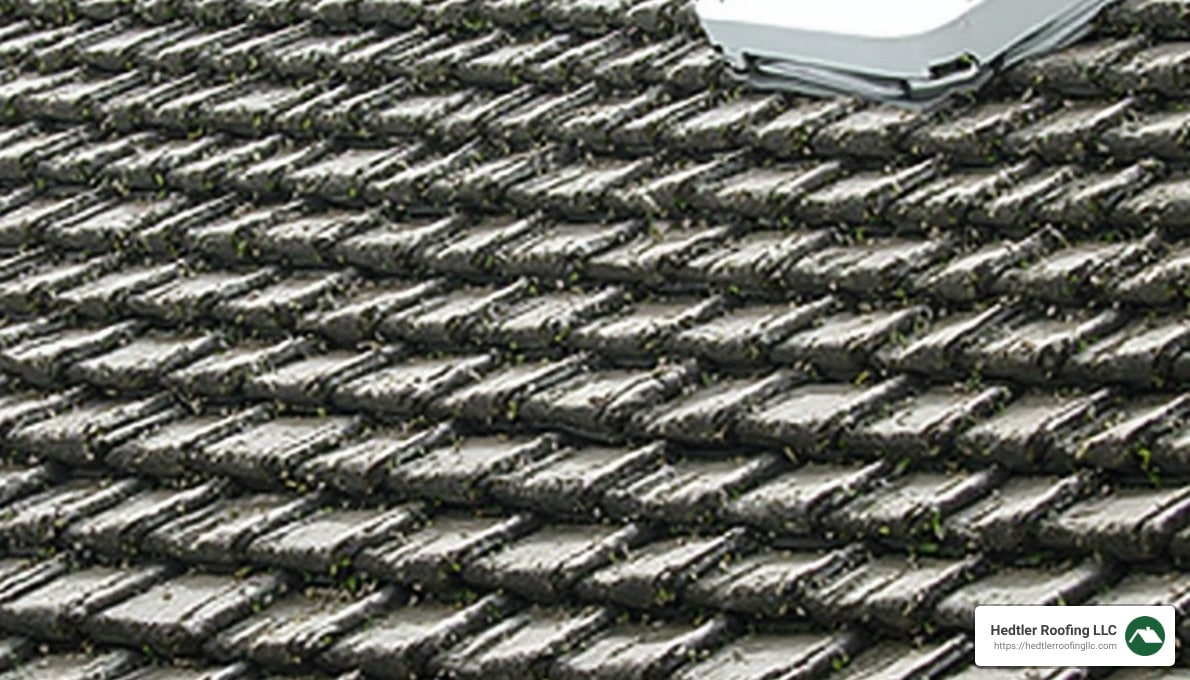Roof Leak Detection: Top 10 Proven Tips for 2024
Roof leak detection is an essential task for homeowners looking to protect their investment and maintain the integrity of their homes. Identifying roof leaks early can prevent extensive and costly damages. If you’re worried about potential leaks, here’s what you should watch for:
- Water Stains: Keep an eye for any discoloration or dark spots on your ceilings and walls.
- Mold & Musty Odors: A moldy smell often indicates moisture presence, even if you can’t see any visible damage.
- Damaged Shingles: Missing or cracked shingles can allow water to seep in.
Identifying these signs early saves you time and money on repairs. Attending to small issues before they become major problems ensures the longevity of your roof.
I’m Jason Hedtler, owner of Roof Experts. With years of experience in roof leak detection, I understand the vital role a safe and secure roof plays in protecting your cherished home. Our services in Massachusetts are designed to help you maintain that safety.

Terms related to roof leak detection:
– how to detect roof leaks
– leaking roof
– roof flashing repair
Signs of a Roof Leak
Spotting the signs of a roof leak early can save you from a lot of trouble and expense. Here’s what you should look out for:
Water Stains
One of the first indicators of a roof leak is water stains on your ceilings or walls. These stains often appear as dark rings or discolored patches. They can be small at first but tend to grow over time if not addressed.
Mold Growth
Mold thrives in damp environments, so if you notice mold growth inside your home, it might be due to a leak. Mold often appears in corners, on ceilings, or behind furniture. It not only damages your home but can also pose health risks.

Peeling Paint
Peeling or bubbling paint on walls or ceilings is another sign of moisture intrusion. This happens when water seeps in and causes the paint to lose its adhesion. It’s a clear signal that you should investigate further.
Attic Inspection
Regularly inspecting your attic can help you catch leaks early. Look for dark spots on the wood, mold growth, or condensation on surfaces. Damaged or damp insulation is also a red flag. If you notice any of these signs, it’s time to take action.
By keeping an eye out for these signs, you can catch leaks before they cause significant damage. But what if you can’t find the leak on your own? Let’s explore how to locate a roof leak with and without attic access.
Common Causes of Roof Leaks
Understanding what causes roof leaks can help you prevent them. Here are some of the most common culprits:
Missing Shingles
Shingles protect your roof from the elements. Over time, they can blister, curl, or even blow off, leaving your roof exposed to water damage. Regular inspections can help you spot missing shingles early. If you find any, it’s best to replace them promptly to avoid leaks.
Damaged Flashing
Flashing is the material that seals joints and edges on your roof, like around chimneys or skylights. If flashing is rusty, corroded, or missing, water can seep in and cause damage. It’s important to check your flashing regularly and repair or replace it as needed to keep your roof watertight.
Chimney Issues
Chimneys can be a source of leaks if they don’t have the proper flashing installed. Complete chimney flashing involves multiple types of flashing to ensure water is kept out. Keep an eye on the flashing around your chimney for any signs of wear or damage.
Skylights
Skylights add beauty and light to your home, but they can also be a source of leaks if not properly installed or maintained. The flashing around skylights must be securely in place and free from damage. Regular maintenance can help prevent skylight leaks.
Roof Vents
Roof vents are essential for ventilation, but they can also let water in if they’re damaged or improperly installed. Inspect your roof vents for cracks or other signs of wear, and make sure they’re securely fastened to prevent leaks.
Improper Installation
Sometimes, the problem starts with how the roof was installed. Issues like incorrect nail placement, poor underlayment, or flashing errors can lead to leaks. To avoid these issues, always hire a reputable roofing contractor for installations and repairs. Poor workmanship can lead to costly problems down the road.
By understanding these common causes, you can take steps to prevent roof leaks and protect your home. But how do you find a leak if you suspect one? Let’s explore the methods for locating a roof leak with and without attic access.
How to Find a Roof Leak
Finding a Roof Leak With Attic Access
If you have access to your attic, you’re in luck. It’s one of the best places to start when you suspect a roof leak. Begin by inspecting the attic during daylight hours when natural light can help you spot trouble areas.
Look for Signs of Moisture:
- Dark Spots: These can appear on wood or insulation and often indicate water intrusion.
- Mold Growth: A musty smell or visible mold can signal prolonged moisture exposure.
- Condensation: Check for moisture on nails or other surfaces, which can suggest leaks.
- Insulation Damage: Wet or stained insulation is a clear indicator of a leak.
Using a flashlight can help you spot shiny or dark spots that might not be visible in natural light. Once you locate a potential leak, measure from a known point, like the edge of the roof, to help professionals find the exact location on the exterior.
Finding a Roof Leak Without Attic Access
Not every home has an accessible attic. In such cases, you’ll need to rely on exterior inspections and professional help.
Check Roof Features:
- Skylights: Look for signs of wear around the edges where water might seep in.
- Valleys: These are common areas for water to pool and cause leaks.
- Chimneys: Inspect the flashing around chimneys for any gaps or rust.
For homes with vaulted or cathedral ceilings, professional inspections are often necessary. Experts can safely access the roof and identify leak sources you might miss from the ground.
Whether you have attic access or not, identifying a roof leak early can save you from costly repairs. If you’re unsure or uncomfortable with the inspection process, it’s always best to call in a professional. They have the tools and expertise to locate and fix leaks efficiently.
Next, we’ll explore advanced methods for detecting roof leaks that go beyond traditional inspections.
Advanced Roof Leak Detection Methods
When traditional methods fall short, advanced techniques can help pinpoint elusive roof leaks. Let’s explore some of these cutting-edge methods.
Water Test Method
A controlled water test is an effective way to identify stubborn leaks. This involves systematically spraying water over sections of the roof while someone inside watches for signs of moisture. It’s a precise method that helps in pinpointing leaks that might not be visible during a regular inspection. However, it’s best left to professionals to avoid causing additional damage.
Thermal Imaging
Thermal imaging uses thermography to detect temperature discrepancies on your roof. This method produces a colored picture where cooler, wet areas appear darker. This visual guide helps professionals quickly identify potential leak sites. While thermal imaging is a powerful tool, it requires a trained eye to interpret the results accurately.
Electronic Leak Detection
Electronic Leak Detection (ELD) is a sophisticated approach to finding leaks, especially in modern roofing systems. This method involves using low voltage to detect breaches in roofing membranes. Products like IntegriScan and PermaScan are examples of ELD systems that provide reliable results.
- IntegriScan: Pinpoints leaks by detecting water paths to building ground. It’s compliant with industry standards and ideal for both vertical and horizontal surfaces.
- TruGround: A conductive medium that improves ELD on non-conductive substrates, ensuring accurate detection.
- PermaScan: Offers continuous monitoring, making it a great choice for long-term leak prevention.
Trace Gas Method
The trace gas method involves releasing a non-toxic gas beneath the roof membrane. As the gas escapes through any breaches, it reveals the leak’s location. This method is safe and highly effective, often used when other techniques fail.
Advanced detection methods like these are invaluable for homeowners dealing with persistent leaks. They provide precise insights that guide effective repairs, ensuring your home’s protection against water damage. Up next, we’ll discuss how to prevent these leaks from occurring in the first place.
Preventing Roof Leaks
Preventing roof leaks is all about vigilance and routine care. A little attention can save you from costly repairs down the line. Here’s how to keep your roof in top shape.
Routine Inspections
Regular inspections are your first line of defense against leaks. Twice a year is a good rule of thumb, ideally in spring and fall. This helps catch any damage from winter storms or summer heat. After a storm, do a quick check for missing shingles or debris buildup. Use binoculars to spot issues without climbing onto the roof. If you notice anything suspicious, call a professional.
Maintenance Tips
Simple maintenance tasks can extend your roof’s life. Trim any overhanging tree branches to prevent damage and reduce debris accumulation. Check for damaged shingles or flashing and replace them promptly. Keep an eye out for moss, which can trap moisture and lead to rot.
Pro Tip: Ensure that your attic is well-insulated and ventilated. This prevents ice dams in winter and reduces heat damage in summer.
Gutter Cleaning
Clogged gutters are a common cause of roof leaks. Water can back up and seep into your roof. Clean your gutters at least twice a year and more often if you have many trees nearby. Ensure downspouts direct water away from your home’s foundation.

Proper Ventilation
Proper ventilation is key to preventing moisture buildup in your attic. This helps avoid condensation that can lead to leaks. Make sure your attic has both intake and exhaust vents. Check for signs of condensation, like foggy windows or a musty smell.
By following these preventive measures, you can minimize the risk of roof leaks and keep your home safe and dry. Next, we’ll tackle some frequently asked questions about roof leak detection to help you stay informed.
Frequently Asked Questions about Roof Leak Detection
How can I tell where my roof is leaking?
Spotting a roof leak early can save you a lot of trouble. Start by checking your attic. Look for water stains on the wood or insulation. These stains often appear as dark spots or rings. Mold growth is another red flag. It usually comes with a musty smell, signaling moisture intrusion.
If you don’t have attic access, scan your ceilings and walls for any discoloration or blistering paint. These are signs that water has traveled down from a leak above.
How do professionals test for a roof leak?
Professionals use several advanced methods to pinpoint roof leaks. One common technique is the water test. This involves spraying water on different parts of the roof to see where it enters. It’s most effective when visual inspections don’t reveal the source.
Another method is thermal imaging. This technology uses infrared cameras to detect temperature differences on your roof. Wet areas are cooler and appear as darker spots on the thermal image, helping to identify leaks.
Electronic leak detection is also used, especially for flat roofs. It involves creating an electrical field across the roof surface. Any breaches in the roof membrane disrupt the field, revealing the leak location.
Where are roofs most likely to leak?
Certain areas on a roof are more prone to leaks. Chimneys and flashing are common culprits. Flashing is the material that seals joints and edges, like those around chimneys and skylights. If it’s damaged or missing, water can seep in.
Roof valleys, where two roof planes meet, are also vulnerable. These areas handle a lot of water runoff, so any weakness can lead to leaks.
Finally, skylights are another potential problem area. Improper installation or aging seals around skylights can allow water to enter.
By understanding these common leak points and detection methods, you can better protect your home from water damage. Now, let’s explore the importance of professional help and timely repairs.
Conclusion
When it comes to roof leak detection, professional help is indispensable. While DIY methods can be helpful for spotting obvious issues, only a trained eye can catch the subtle signs of a leak that might otherwise go unnoticed. Professionals have the tools and expertise to identify not just where a leak is, but also what caused it and how to fix it properly.
For homeowners in Massachusetts, particularly in the Bellingham and Franklin areas, Roof Experts is a trusted name. With over 20 years of experience, we pride ourselves on delivering high-quality roof repairs and installations. Our team is dedicated to ensuring your home remains safe and dry, using advanced techniques like thermal imaging and electronic leak detection to find and fix leaks efficiently.
Timely repairs are crucial. Ignoring a leak, even a small one, can lead to significant damage over time. Water can compromise your home’s structural integrity, promote mold growth, and even pose fire risks if it reaches electrical wiring. By addressing leaks promptly, you can prevent these issues and save yourself from costly repairs down the line.
If you suspect a roof leak or want to ensure your roof is in top condition, don’t hesitate to contact us. Our expert team is ready to assist you with thorough inspections and effective repairs. When it comes to roof leaks, early detection and professional intervention are key to protecting your home.


